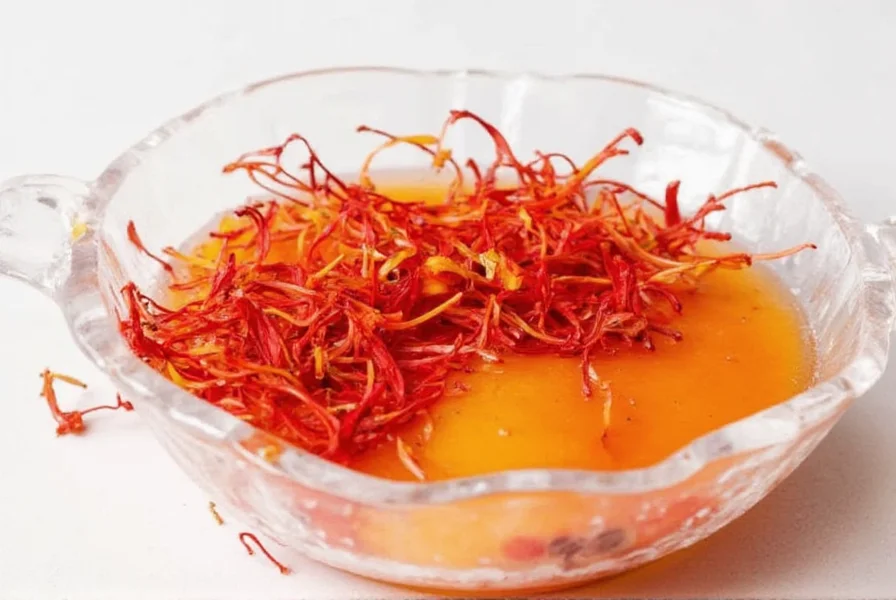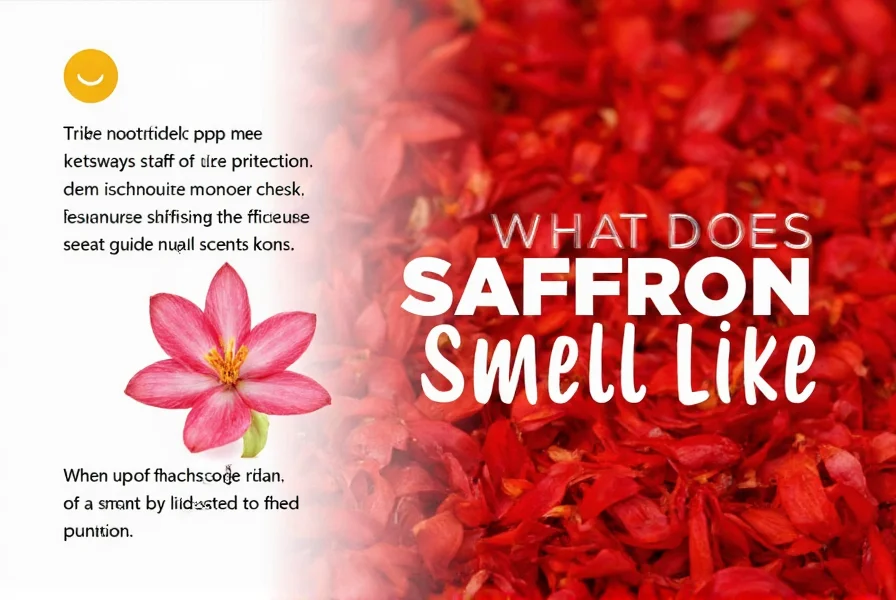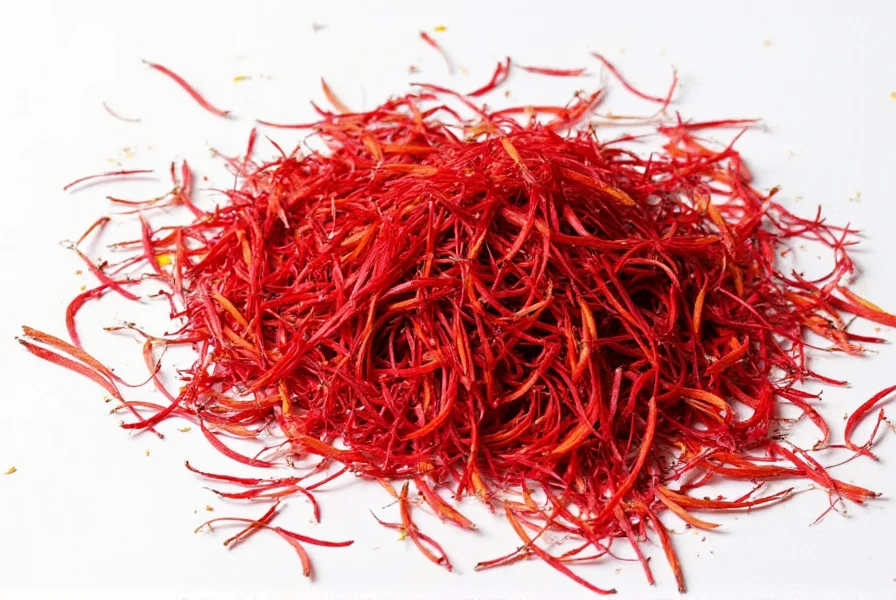Saffron's aroma is as precious as the spice itself, offering a sensory experience that defines its culinary and aromatic value. When you open a container of premium saffron threads, you're greeted with an immediate, powerful fragrance that distinguishes it from ordinary spices. This distinctive scent isn't just pleasant—it's a critical quality indicator that experienced chefs and spice connoisseurs rely on to verify authenticity and freshness.
The Complex Aromatic Profile of Saffron
Saffron's scent contains multiple aromatic compounds that create its signature fragrance. The primary compound responsible for saffron's characteristic smell is safranal, which develops when the fresh stigma is dried. This compound gives saffron its intense, penetrating aroma that can fill a room even from a small quantity.
When properly stored and fresh, high-grade saffron releases a multi-layered fragrance that unfolds as you experience it:
- Top notes: Bright floral elements reminiscent of fresh hay or dried grasses
- Middle notes: Rich honey sweetness with subtle earthy undertones
- Base notes: Delicate spicy warmth with faint metallic or iodine-like hints
This layered aromatic profile explains why saffron's scent is often described as both delicate and powerful simultaneously. Unlike many spices that offer a single dominant note, saffron provides a complex olfactory experience that evolves as you smell it.
| Saffron Quality Level | Aroma Characteristics | Additional Sensory Indicators |
|---|---|---|
| Premium (Category I) | Strong, penetrating floral-honey fragrance with complex layers | Bright red threads, minimal yellow style, releases color immediately in warm liquid |
| Good (Category II) | Noticeable but less intense aroma, slightly muted floral notes | Some yellow style visible, slower color release |
| Fair (Category III) | Faint, dusty smell with minimal complexity | Significant yellow style, threads appear dry and brittle |
| Poor/Substandard | Musty, stale, or virtually no aroma | Threads may be broken, discolored, or show signs of adulteration |
How Saffron's Scent Changes with Quality and Freshness
The specific aroma of saffron varies significantly based on its quality, origin, and freshness. Understanding these variations helps determine whether you have authentic, high-grade saffron:
Freshness impact: Newly harvested saffron emits the most vibrant aroma. As saffron ages, safranal gradually degrades, causing the scent to become less pronounced and more musty. Properly stored saffron (in airtight container away from light) maintains its fragrance for 1-2 years, while compromised storage leads to rapid aroma deterioration.
Quality differences: Premium saffron (often labeled as 'coupe' or 'sargol') delivers an intense, complex fragrance with prominent floral notes. Lower grades containing more of the yellow style (the non-aromatic part of the stigma) produce a weaker, less distinctive smell. Adulterated saffron may have an artificial or chemical scent.
Origin variations: While all genuine saffron shares core aromatic elements, regional differences exist:
- Iranian saffron: Typically strongest aroma with pronounced honey notes
- Spanish saffron: More balanced profile with subtle earthiness
- Kashmiri saffron: Distinctive woody undertones alongside floral notes
Sensory Comparisons: Understanding Saffron's Scent
For those unfamiliar with saffron's aroma, comparing it to more common scents helps build a mental reference. When someone asks what does saffron smell like to someone who's never experienced it, these comparisons provide helpful context:
Imagine the sweet fragrance of dried hay on a summer afternoon, blended with the delicate floral notes of fresh spring blossoms, and touched with the subtle sweetness of wildflower honey. Now add a whisper of warm spice—like a distant memory of ginger—and the faintest metallic hint that reminds you of iodine. This complex interplay of scents creates saffron's unmistakable aroma profile.
Unlike turmeric (which has an earthy, slightly bitter smell) or paprika (with its sweet pepper aroma), saffron's scent is uniquely floral and complex. It shares some characteristics with safflower (its visual imitator), but saffron's fragrance is significantly more intense and nuanced.

How Cooking Transforms Saffron's Aroma
When used in cooking, saffron's scent undergoes fascinating transformations that enhance dishes in specific ways. Understanding what saffron smells like when cooking helps chefs time their additions perfectly:
When steeped in warm liquid (traditionally milk, broth, or water), saffron releases its aromatic compounds gradually. The initial floral notes become more pronounced, while the metallic undertones mellow. In rice dishes like paella or risotto, the aroma blends with other ingredients to create a distinctive, complex fragrance that defines the dish.
The heat of cooking causes safranal to interact with other compounds, creating new aromatic elements. In baked goods, saffron contributes a subtle floral sweetness that complements eggs and butter. In savory applications, it adds depth without overpowering other flavors—a delicate balance that makes saffron so prized in culinary traditions worldwide.
Using Scent to Evaluate Saffron Quality
Professional chefs and spice merchants rely heavily on aroma when assessing saffron quality. Here's how to use scent as your primary evaluation tool when determining what good saffron should smell like:
- Initial impression: High-quality saffron should announce itself immediately upon opening the container. If you have to search for the scent, the saffron is likely old or low-grade.
- Complexity test: Rub a few threads between your fingers to release more aroma. Premium saffron will reveal multiple scent layers—first floral, then honey-like sweetness, followed by subtle earthy notes.
- Water test: Place threads in warm water. Authentic saffron releases both color and aroma simultaneously. If you get color without fragrance, it's likely adulterated.
- Duration check: The scent should linger on your fingers for several minutes. Faint or quickly disappearing aroma indicates poor quality.
Avoid saffron that smells musty, dusty, or has no discernible fragrance—these indicate age or improper storage. Saffron with chemical or artificial scents has likely been treated or adulterated.

Common Misconceptions About Saffron's Scent
Several myths persist about saffron's aroma that can lead to confusion when trying to identify authentic saffron:
- Misconception: Saffron should smell strongly of iodine
Reality: While some detect faint metallic notes, dominant iodine smell indicates poor quality or adulteration - Misconception: All saffron smells exactly the same regardless of origin
Reality: Regional variations create subtle but noticeable differences in aroma profile - Misconception: Stronger smell always means better quality
Reality: While premium saffron has a strong aroma, balance and complexity matter more than intensity alone
Understanding these distinctions helps answer the frequently asked question why does my saffron not smell like expected. Often, this discrepancy stems from purchasing lower-grade saffron, expired product, or adulterated versions that lack the authentic aromatic profile.
Practical Applications of Saffron's Aroma Knowledge
Knowing saffron's scent profile isn't just academic—it has practical applications for home cooks and professionals alike:
When following recipes that call for saffron, proper preparation maximizes its aromatic potential. Always steep threads in warm (not boiling) liquid for 15-20 minutes before adding to dishes. This gradual extraction preserves the delicate aromatic compounds that would otherwise evaporate with direct high heat.
For storage, keep saffron in an airtight container away from light and moisture. Glass containers with tight seals work best. Properly stored saffron maintains its distinctive aroma for up to two years, though peak fragrance occurs within the first year.
When comparing products, use your sense of smell as the primary quality indicator. Don't rely solely on color—some inferior products are artificially colored but lack authentic aroma. The question what should saffron smell like when authentic has a clear answer: complex, floral, and immediately noticeable.
Frequently Asked Questions
What does fresh saffron smell like compared to old saffron?
Fresh saffron emits a strong, complex floral-honey fragrance with subtle earthy notes that fills the room immediately. Old saffron has a significantly diminished aroma, often described as musty or dusty, with the delicate floral notes largely disappeared. The metallic undertones may become more pronounced as saffron ages.
Why does my saffron have a metallic smell?
A faint metallic or iodine-like note is normal in high-quality saffron and comes from natural compounds in the stigma. However, if the metallic smell dominates the fragrance or is unpleasantly strong, it likely indicates poor quality, improper storage, or adulteration. Authentic saffron's metallic note should be subtle and balanced within the overall floral-honey profile.
How can I tell if saffron is authentic by smell alone?
Authentic saffron has an immediate, complex aroma that's floral, honey-like, and slightly earthy. When rubbed between fingers, the scent intensifies and reveals multiple layers. Adulterated saffron often has little to no fragrance, a chemical smell, or an inconsistent aroma that doesn't match the characteristic profile. Genuine saffron's scent should linger on your fingers for several minutes.
Does saffron smell different when used in cooking?
Yes, saffron's aroma transforms when cooked. The initial floral notes become more pronounced when steeped in warm liquid, while the metallic undertones mellow. In dishes like paella or risotto, the scent blends with other ingredients to create a distinctive, complex fragrance. High heat can cause some aromatic compounds to evaporate, which is why chefs typically steep saffron in warm liquid before adding it to recipes.
What should saffron smell like when it's of premium quality?
Premium saffron emits a strong, penetrating fragrance with distinct floral notes reminiscent of fresh hay, balanced by honey-like sweetness and subtle earthiness. The aroma should be complex with multiple layers that unfold as you experience it, and include faint spicy warmth with delicate metallic undertones. When rubbed between fingers, the scent intensifies and lingers for several minutes, indicating freshness and high concentration of aromatic compounds.











 浙公网安备
33010002000092号
浙公网安备
33010002000092号 浙B2-20120091-4
浙B2-20120091-4